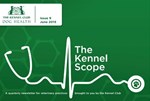New VetCompass publication: Epidemiology of canine hyperadrenocorticism in the UK
A new VetCompass paper published in Journal of Small Animal Practice describes the epidemiology of hyperadrenocorticism in dogs attending primary-care practice in the UK.
This study aimed to describe the signalment, prevalence and risk factors in dogs diagnosed with hyperadrenocorticism in primary-care practice in the UK that were participating in the VetCompass Programme from 2009 to 2014 and to describe the diagnostic testing protocols and outcomes for these cases.
The estimated prevalence of hyperadrenocorticism diagnosis in dogs was 0·28% (95% confidence interval: 0·25 to 0·31). Statistical analysis revealed four associated risk factors: breed, breed-relative bodyweight, age and insurance status. The bichon frise had 6·5 times the odds of hyperadrenocorticism compared with crossbreds. Individuals weighing more than or equal to their breed mean, dogs aged 12.0 years or older and insured dogs were all at increased odds of hyperadrenocorticism diagnosis.


